Phu Quoc Prison, also known as “Coconut Tree Prison,” is an important historical site located on Phu Quoc Island, Kien Giang Vietnam. This is the place where thousands of revolutionary soldiers and patriots were detained during the Vietnam War. With touching and devastating stories about resilience and the will to overcome adversity, Phu Quoc Prison is not only a place to preserve historical memories but also a destination for visitors to better understand the hardships and sacrifices of those who fought for independence and freedom. Let’s explore Phu Quoc Prison with Ha Tien Vegas to feel the profound historical and human values that this place brings.
Introduction Where is Phu Quoc prison?
Phu Quoc Prison is a prison located at 350, Nguyen Van Cu Street, An Thoi Ward, 28km from the center of Duong Dong Ward, Phu Quoc.
During the Indochina war, this prison was also called Cay Dua prison. This is the central prisoner of war camp in the entire Republic of Vietnam, once holding more than 32,000 prisoners of war. In 1995, this place was recognized by the Ministry of Culture and Information as a special national relic, and since then, the prison has been open to tourists.
Perhaps when arriving here, tourists are curious about wartime stories and brutal crimes that people often talk about during the French, American and Puppet colonial periods. Stories that are faithfully recreated will be the clearest proof of the cruelty and ferocity of war.
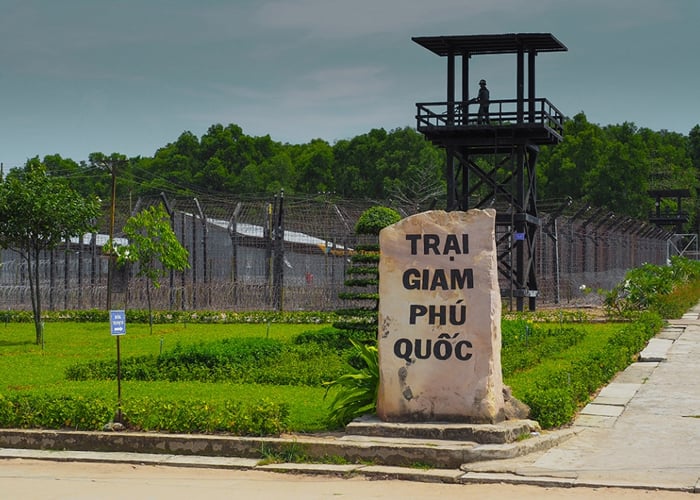
History of Phu Quoc prison relic site
Prison on Phu Quoc island during the French colonial period
- The largest prison in Southeast Asia
If anyone wonders what year Phu Quoc prison was built, it was 1946, when the French colonialists occupied Phu Quoc to build the largest prison in Southeast Asia. The prison at that time had an area of about 40 hectares and was divided into 4 areas A, B, C, D.
This place is extremely strictly guarded, surrounded by barbed wire fences, with security lights above. Guard towers and patrols are fully equipped with guns.
By April 1954, the prison had about fourteen thousand prisoners, mostly men. Under the brutal torture of the French colonialists, 99 communist soldiers died.
- Geneva Agreement
After the Geneva Agreement in July 1954, France returned prison management rights to Vietnam. It seemed like the war stories had ended, but no, Cay Dua prison entered a new nightmare, more brutal and horrifying.
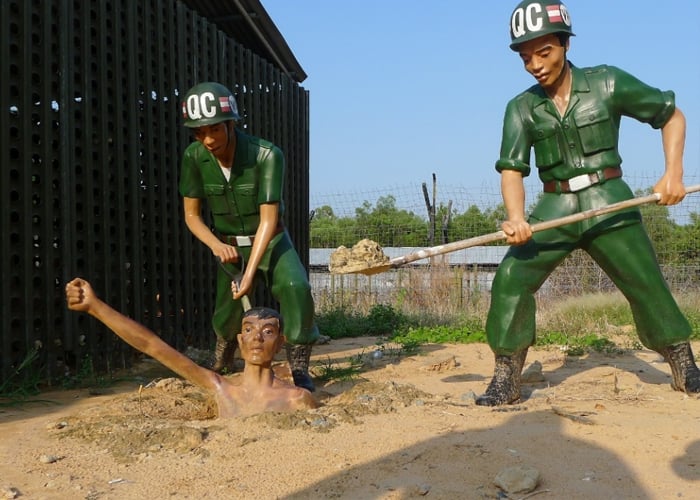
Cay Dua Prison during the American-Puppet period
After returning management rights to the Vietnamese government, at the end of 1955, a new prison was built in the old Cay Dua prison with an area of about 4 hectares. At this time, the prison was called Cay Dua Prison, divided into male, female, and elderly areas.
Brutal forms of torture such as barbed wire tiger cages, nailing to the forehead, knees or high voltage electric shock to the body… are used on our soldiers.
During this period, thousands of people died in Phu Quoc prison, and tens of thousands of people suffered incurable injuries and disabilities.

The remaining items are now at the prison in Phu Quoc
Gate of the 8th Military Police Battalion at Phu Quoc Prison
The gate of the 8th Military Police Battalion is made of iron pillars and solid bricks, forming 2 square pillars on both sides. The restored relic is exactly like the original.
Prisoner of war cemetery inside the prison historical site
The prisoner of war cemetery with an area of about 20,000 square meters is about 1km from the prison site – subdivision B2. The cemetery is designed in a circular shape, above is a fist-shaped monument representing the indomitable, heroic, and resilient spirit of our people.
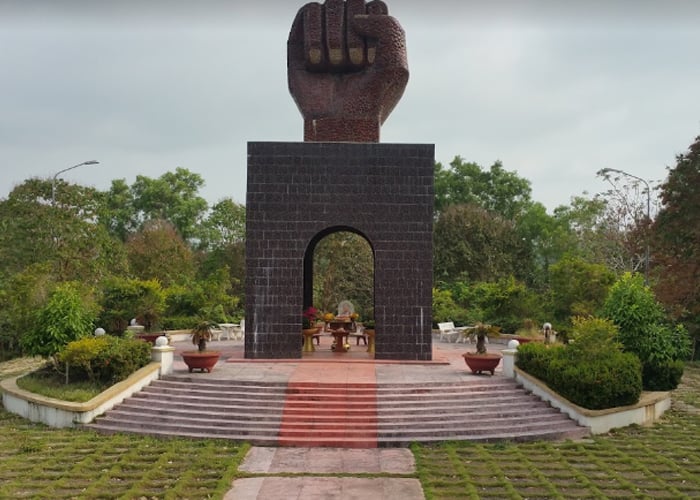
Kien Van Church at the prison in Phu Quoc
Kien Van Church is currently a ruin with only cement columns remaining, covering an area of more than 4,000 square meters.
Additional monument gallery
The exhibition house is divided into 2 rooms. Including, room 1 contains artifacts and the history of the formation and existence of the prison. Room 2 has 100 documentary photos of the enemy’s torture methods as well as the ways our people fought during the war.
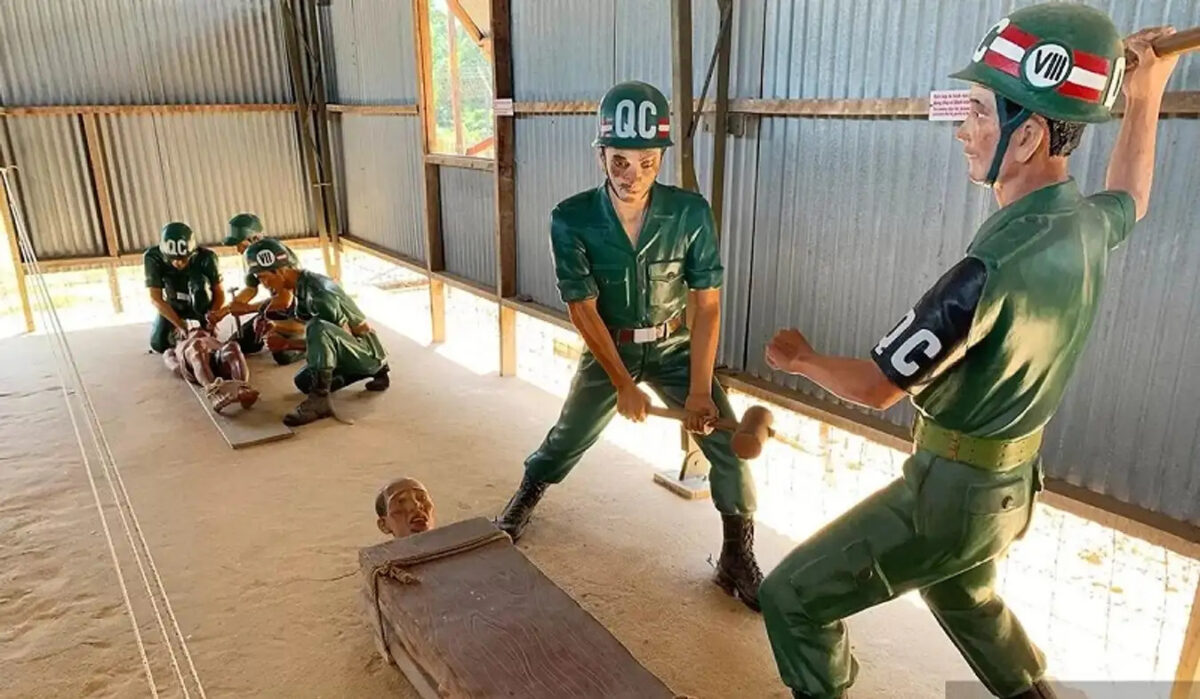
Division B2 in Phu Quoc Island Prison
Subdivision B2 is currently being restored with an area of more than 17,000 square meters, including items such as: watchtowers (watch towers), fences, prison gates of subdivision B2, barbed wire tiger cages, kitchens, dining halls, areas for detaining and torturing prisoners of war…
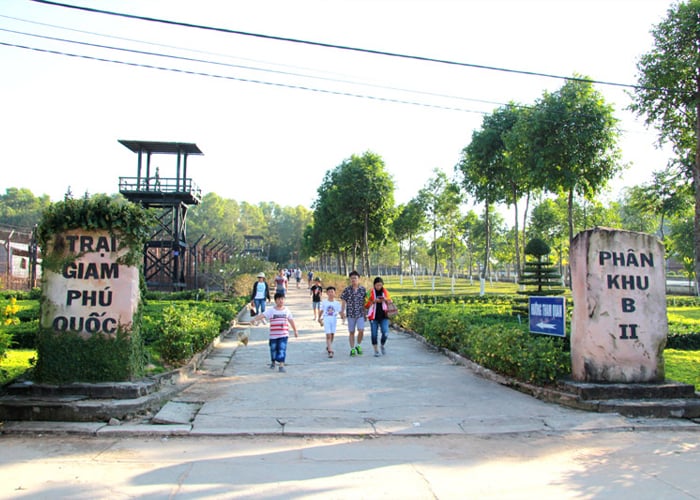
Martyrs’ memorial at Sim Hill
The memorial is designed with 5m high waves on both sides and a pointed block hollowed out in the middle about 2m, meaning “people came out from that place”.
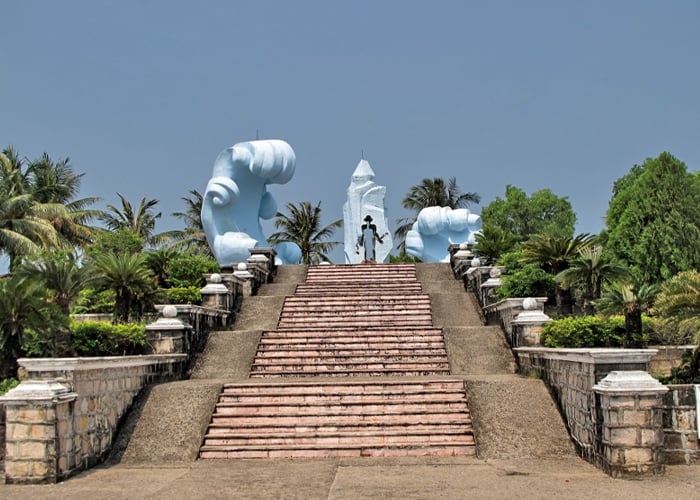
Gate of the 7th Military Police Battalion
Battalion 7’s gate is about 4.1m high and 0.85m wide, the two gate pillars are 5.9m apart. Close to the gate pillar, from the left side, is a summary board of the 7th Military Police Battalion.
The gate and house of the Prison Command Board at the prison in Phu Quoc
Currently, the gate and the prison command board’s house are all restored with reinforced concrete, corrugated iron roofs, and wooden windows. The main gate door is made of strategic iron bars and barbed wire.
Historical significance of Phu Quoc prison?
If the places to visit and have fun in Phu Quoc show us the prosperity and appeal of this island, Phu Quoc prison shows a painful silence. This place has saved the heinous crimes of American imperialism and French colonialism. They do not hesitate to use barbaric methods to torture and destroy the soldiers’ will to fight.
Every corner of the prison, every story of a soldier demonstrates the resilient, indomitable and heroic fighting spirit of our nation. Visiting Phu Quoc prison, we can see the severity of war as well as better understand the nation’s history.
Experiences not to be missed at Phu Quoc prison relics
See with your own eyes the torture scene in section B2
This is the location where the brutal torture scenes of the prison were recreated and realistically recreated. Telling wartime stories with effigies of prisoners and soldiers will make visitors feel most clearly the cruel reality of the struggle for independence of our army and people in the past.
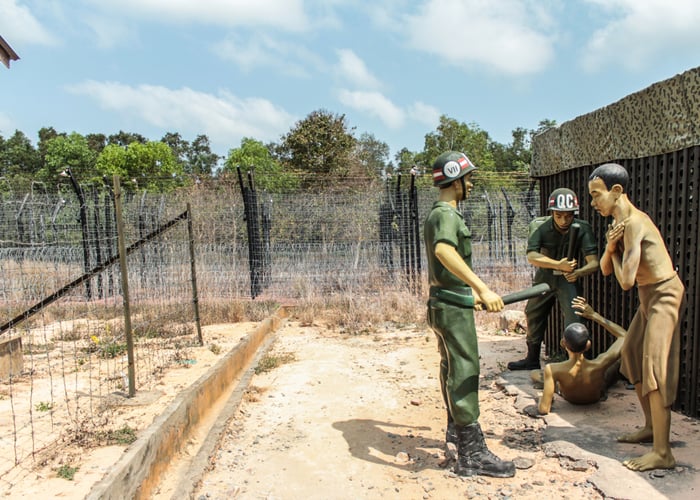
Visit the solitary confinement and torture room at the prison in Phu Quoc
The prison solitary confinement room in Phu Quoc is the most haunted place for many revolutionary soldiers. Because it was here that the colonial empire used cruel forms of torture on our people’s soldiers.
Learn about the types of torture of the US imperialists in Phu Quoc prison
Some of the corporal punishments in Phu Quoc prison that former prisoners have recounted include:
- Barbed wire tiger cages: There are different types of tiger cages made of barbed wire, with different sizes. There are types where prisoners lie on the ground, there are types where prisoners lie on barbed wire, there are types where prisoners can only sit hunched over… Prisoners are forced to strip naked and bask in the rain and sun for many days.
- Crucifixion: To torture the will of prisoners, soldiers will nail 3-inch or 7-inch nails on body parts such as hands, knees, neck…
- Chisel and break teeth with a hammer.
- Oil pan: Prisoners will be put in a sack, then placed in a pan of boiling oil.
There are many other brutal torture methods that Cay Dua prison has recreated in an extremely realistic way.

A few notes when going to Phu Quoc island prison
- Phu Quoc Island Prison is a special attraction, so every visitor who visits here needs to pay attention to avoid damaging the artifacts here:
- You should wear polite clothes.
- Do not touch or touch the exhibits on display.
- You need to bring food and water because the prison is built on a fairly large scale. While sightseeing, it is very difficult to find food and drinks.
- Do not throw trash indiscriminately to avoid affecting the hygiene of the relic site.
- The prison is open from 8:00 a.m. to 11:30 a.m. and from 1:30 p.m. to 5:00 p.m.
- Admission is completely FREE.

Hopefully the above article has provided you with a lot of useful information for your trip to Phu Quoc Prison.
#PhuQuocPrison #PhuQuoc #Vietnam #Travel #Explore #dulichVietnam #DulichPhuQuoc #DulichCambodia #dulichKiengiang
Just visiting Phu Quoc Prison, you can catch a speedboat ashore at Ha Tien speedboat port – Ha Tien city to visit more interesting places and spend the night at Ha Tien Vegas right next to Ha Tien – Kampong Trach border gate. It is also a great opportunity for you to rest before continuing your journey to explore Kampot, PhnomPenh the next day.
Book now: https://hatienvegas.com/rooms/
Hotline: (+855)0718898922 – (ខ្មែរ) (+855)069953615 – (中文) (+84)0941341545 – VN (+855)087258581 Front Office (ខ្មែរ)